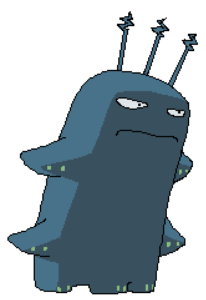 The past week was full of anxiety. During the last Wednesday live session a new task was revealed. This will keep us busy over the next two weeks.It is my intention to get out of my comfort zone and carry out the development using not only an engine that I have abandoned for years, Unity, but also using an add on that in theory should allow me to do the whole job without having to write a single line of code, which doubles the bet!.
The past week was full of anxiety. During the last Wednesday live session a new task was revealed. This will keep us busy over the next two weeks.It is my intention to get out of my comfort zone and carry out the development using not only an engine that I have abandoned for years, Unity, but also using an add on that in theory should allow me to do the whole job without having to write a single line of code, which doubles the bet!.
We are almost leaving behind the first month of this adventure and I am excited to be revealing the contents week by week, especially because I find each challenge free enough to try some things I didn’t have the opportunity to do professionally before and at the same time playing on the edge of each slogan, trying not to get out of them, but at the same time trying to combine my personal -and professional- interests with what is demanded each week.
Rapid Ideation Two (Part 1)
The new task consists of creating a device which, somehow, brings together two concepts in itself. On the one hand, there is an image coming from a popular card game called Dixit and a newspaper headline, magazine, information portal or similar. All this must be interesting to us in order to combine the whole of it with the drawing.The drawing’s features make the card interpretation be quite open. Some participants thought to see a fallen angel. Others, instead, suggested the evocation of justice or balance, a death bringer, a winged being, etc.
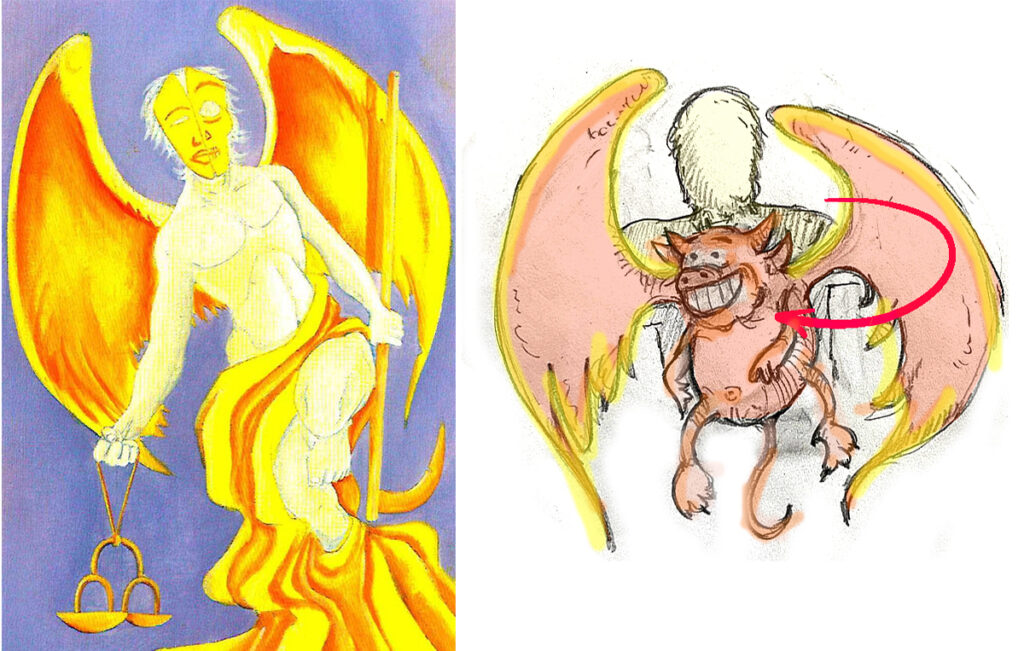
Personally speaking, the drawing gives me two ideas almost at once: on the one hand the gargoyle itself, and on the other hand I am curious about those details not shown in the image.
For example the wings. They are attached to the back being part of the character in the close-up. It might also be a second creature that grabs the gargoyle by the shoulder blades and hides his head and body behind the back hidden from us. It amuses me to imagine the character rotating as if it were a sculpture being exposed to this evil creature that might be having control over the character unwillingly.
As for the headline I find this article quite interesting and it helped me a lot to figure out and round my concept. The article was published on the New York Times as ‘Italy wants it’s tourist back, unless they sit on the statues’. The article deals with the problem of tourist vandalism and lack of respect for historic buildings and monuments due to the obsession of visitors taking pictures of themselves destroying the artistic patrimony just for the sake of another selfie to share…
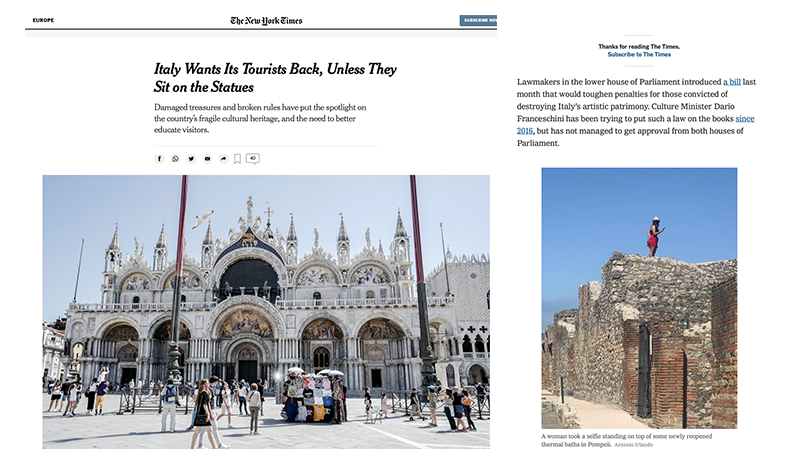

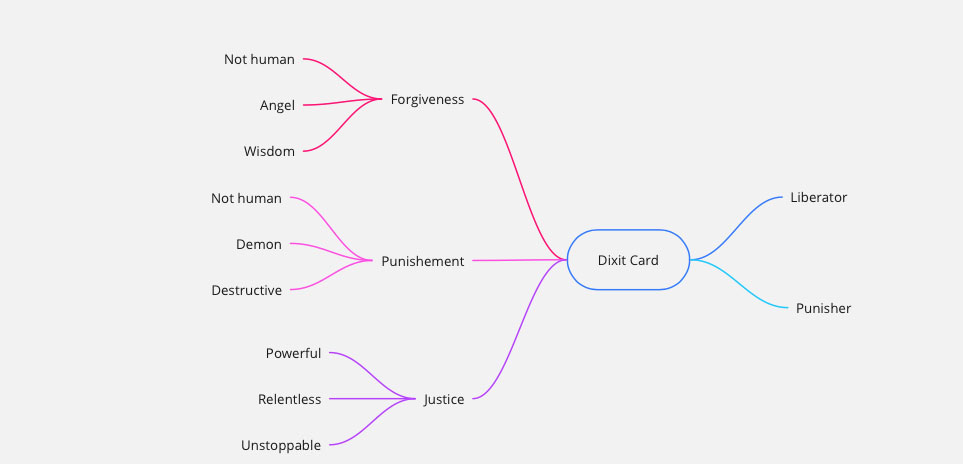
So I rounded up the idea imagining some sort of ‘statue revenge’ defending themselves against careless tourist for this project, using the Gargoyle character from the card as in the sketch down here:
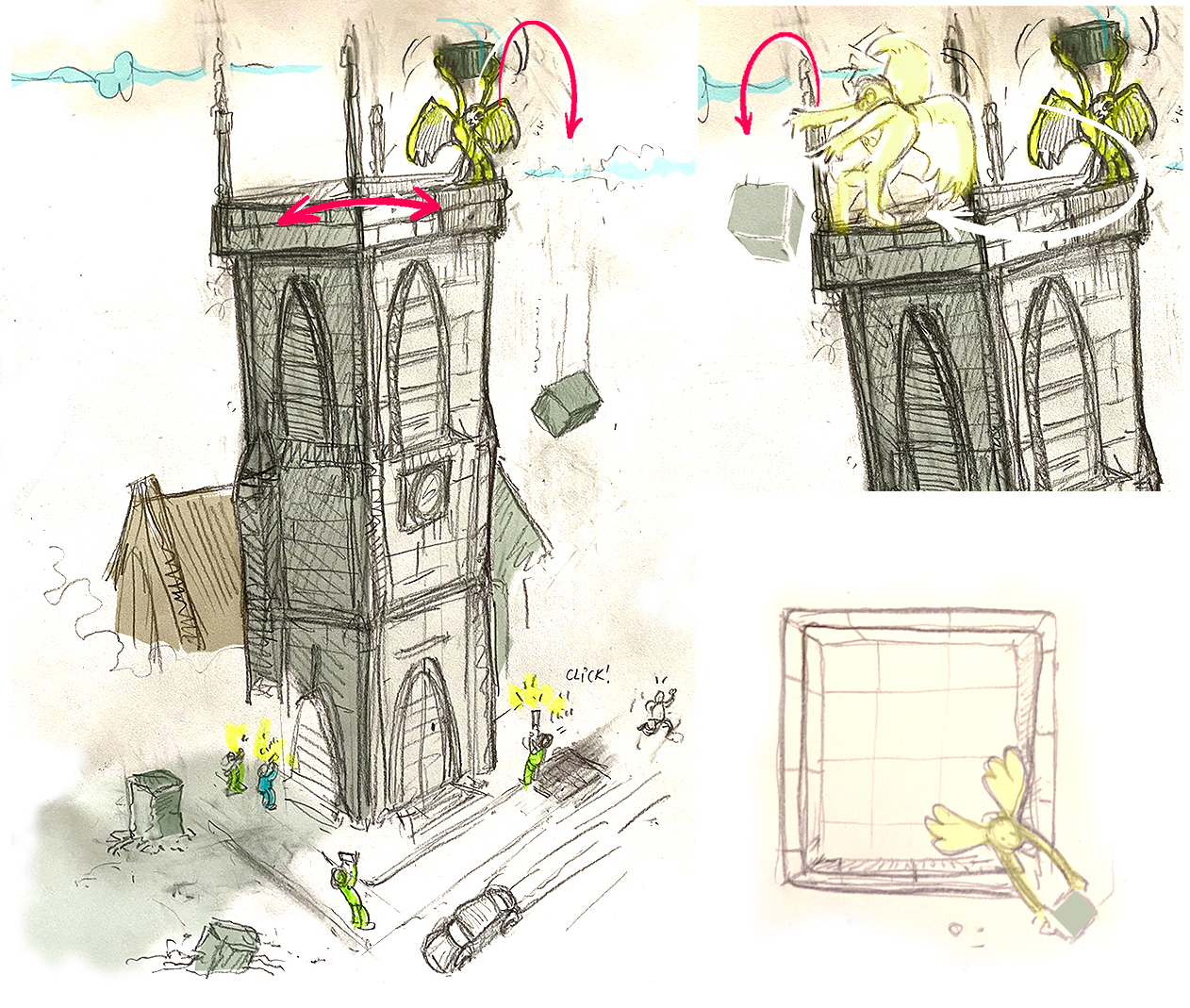
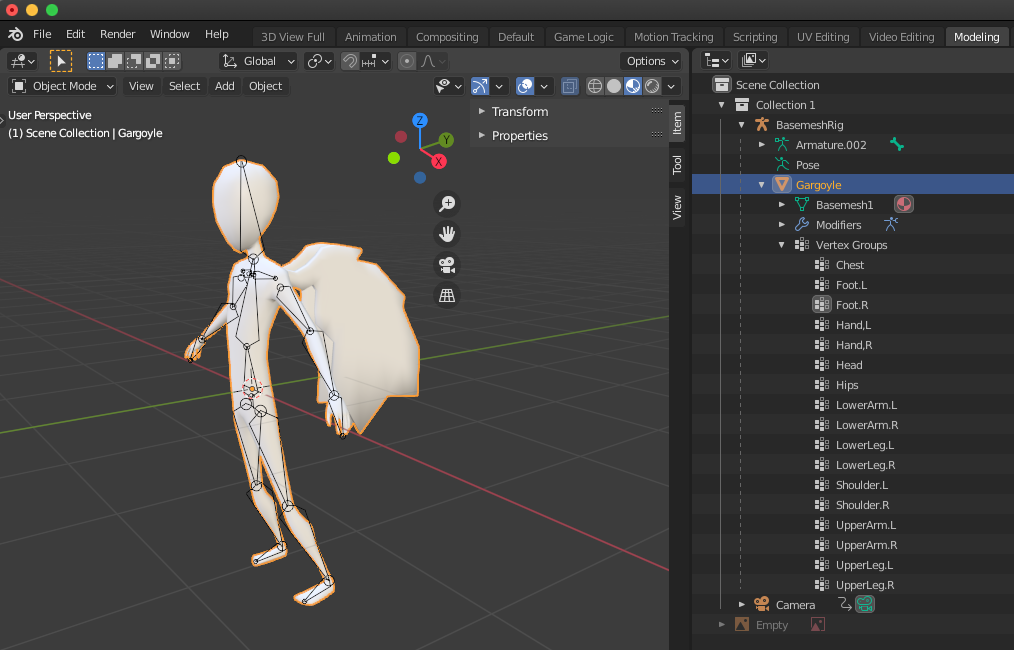
I like this concept a lot as can be a funny way to experiment how to develop a small game using Unity. At this point it looks quite ambitious. During the weekend I did a basic model of the Gargoyle in Blender (wings to be rigged), modifying a base mesh from a biped and export it to Unity on .fbx format.
For the church I based my model upon the Holy Trinity Church in Geneva (not so far from my house). It took me around 40 minutes to get this low poly version (not textured) of it:

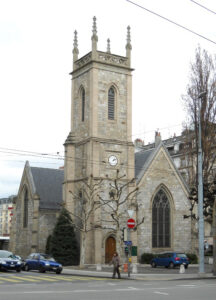

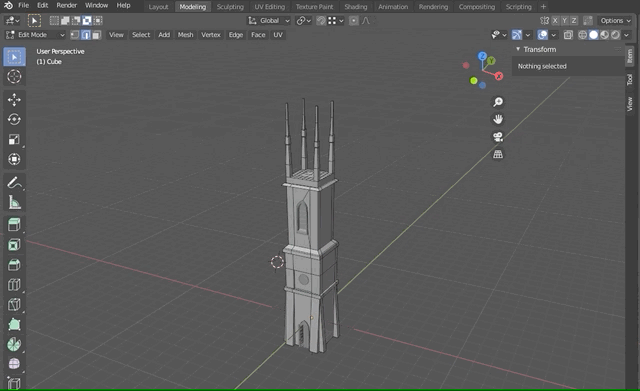
I also managed to make it move with the keyboard and I’m planning to complete the development this week.
Still so much work to do… to be continued on Week 5 !
Playmaker versus Bolt

I had purchased a Playmaker license many years ago, when it was just in its trial version, and it is still valid and I am looking forward to taking advantage of it. In order to gain time and feel more confident in the use of these tools in the days to come, I have spent a few hours learning about the operation and philosophy of Playmaker whenever I had a free moment.
Playmaker is a very popular visual scripting add-on for Unity conceived as a big state machine editor, ideal for doing fast prototyping since it facilitates the creation of entities such us AI, animations, interactive objects, cut scenes, pathways etc without have to code. I was hesitating between using Playmaker or Bolt (the now official visual framework adopted by the developers of Unity) but it looks like Bolt is very close to C# and my idea is to test the real limitations of dragging and dropping state machines here and there as part of my personal research.
Pocket Gamer Connects Digital 5
Throughout last week and this week I had the opportunity to enjoy and learn from the presentations given by different representatives of the developer community, distributors and the industry at the Pocket Gamer Connects Digital 5 Conference.
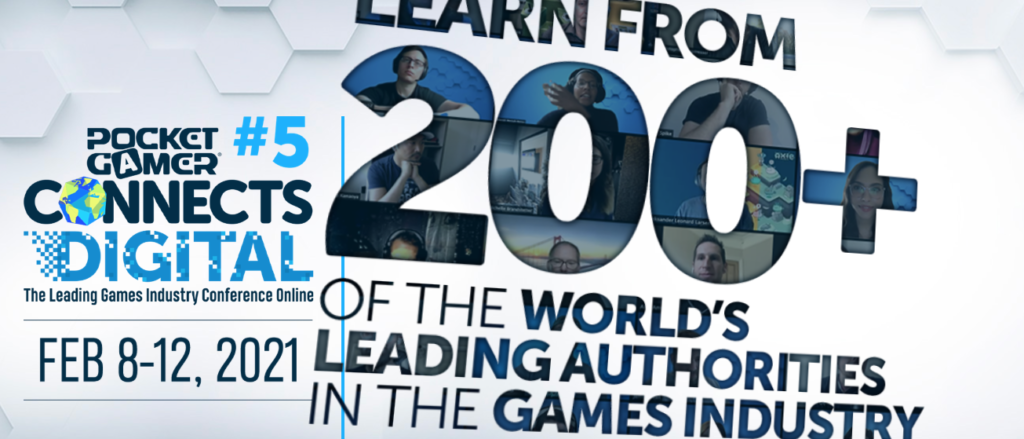
Basically the presentations were divided into 3 main topics: monetization and marketing, casual and hypercasual games and indie developers, each of them with its corresponding channel presenting the talks in overlapping schedules so that during the live streaming it was difficult for me to select between them. For obvious reasons I gave priority to the presentations of the indie developers channel, but there were also some other videos that literally surprised me as the presentation of an artificial intelligence of online use for the development of creative ideas applicable to the creation of games.
Personal and professional Goals
We are almost leaving behind the first month of this adventure and I am excited to be revealing the contents week by week, especially because I find each challenge free enough to try some things I didn’t have the opportunity to do professionally before and at the same time playing on the edge of each challenge, trying to combine my personal -and professional- interests with what is demanded each week.
With the passing of the weeks my objectives in this aspect are also taking shape, sharing with many other students the possibility of creating a new game from the beginning to the end without leaving aside another goal which is the foundation of my own development studio not only to continue self-publishing my products but to join a sector of this activity that in Switzerland is still very little expanded and most of those who are dedicated to the creation of video games do it in a rather isolated way.
Fortunately, the situation has improved over the years. We, as developers, can count on The Arts Council of Switzerland which gave me financial and logistical support to create a graphic adventure born from a crowdfunding project.
Basically to be beneficiary of such support you have to submit an entry to a competition and be selected by a professional jury related to the different branches of art. This year the announcement will be in June. I am thinking about presenting a new idea related to a game which will be totally different from the previous one not only in type and style, but also taking into account the technology needed to develop this game.
Now I am working on the pre-production phase on a game not related with this course, I will keep writing about my progress throughout this blog.
List of figures
Fig 1 – Left: Dixit card illustrated by Marie Courdat (c) 2008 Asmodee / Right: illustration based upon the same card by the author.
Fig 2 – New York Times article ‘Italy wants its tourists back, unless they sit on the statues’, photo by Alessandro Grassani.
Fig 3 – Sceeen capture of ideation process made by the author using Miro online Mind Map tool.
Fig 4 – Illustration of rapid ideation gameplay made by the author.
Fig 5 – 3D Low poligonal model of the Gargoyle character modified by the author using a human base mesh in Blender.
Fig 6 – The Church of the Holy Trinity at Geneva (Switzerland). Photo Wikipedia.
Fig 7 – 3D low poligonal model version made by the author using Blender.
Fig 8 – Screen captures from visual scripting add-on for Playmaker developed by Hutong Games and Bolt visual scripting tool by Unity .
Fig 9 – Pocket Gamer Connect Digital Conference online 2021 promotional image (c) PG Connects.
References
Unity Blog. 2020. ‘Bolt visual scripting is now including on all Unity plans’. [online] Available at: <https://blogs.unity3d.com/2020/07/22/bolt-visual-scripting-is-now-included-in-all-unity-plans/> [Accessed 10 February 2021].
Provoledo, E. 2020. ‘Italy wants its tourists back, unless they sit on the statues‘. New York Times. [online] Available at:<https://www.nytimes.com/2020/08/19/world/europe/italy-vandalism-tourism.html> [Accessed 18 February 2021]
Pocket Gamer Connects Digital 5. 2021. [online] Available at: <https://www.pgconnects.com/digital>[Accessed live from February 8-12 2021]
MacKay, A. 2018. ‘The Productive Artist‘. [online] Available at: <http://byy.allanmckay.com/download-best-year-yet-book> [Accessed 16 February 2021].